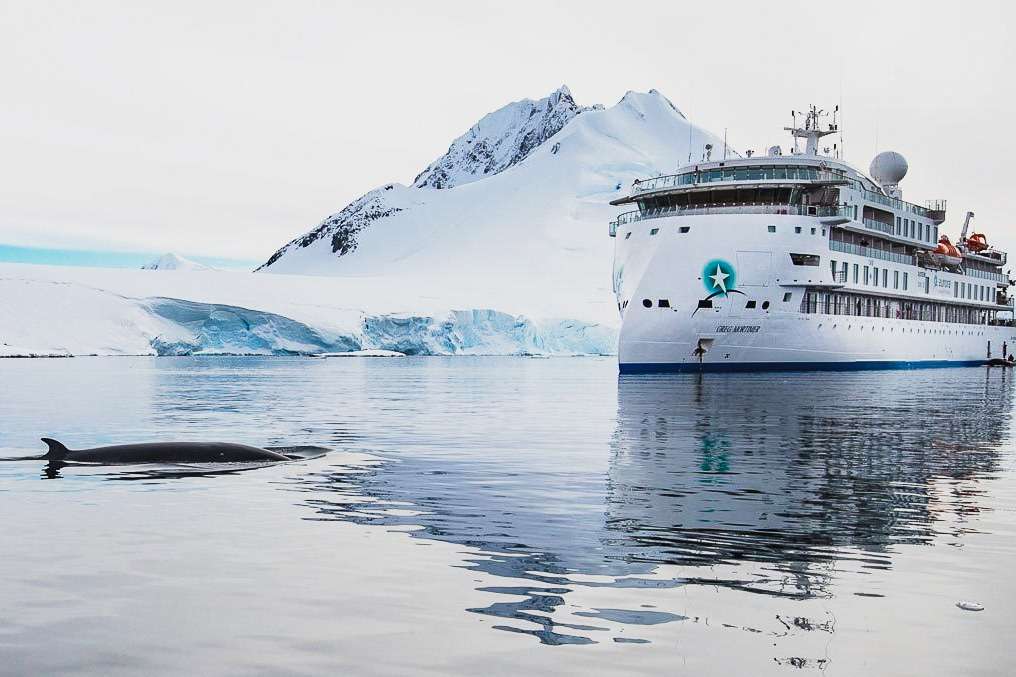How does latitude affect the climate? There is indeed a link — here’s what you need to know.
Earth, the planet we call home, is a place of diverse landscapes and climates. From the searing heat of the Sahara desert to the freezing cold icy terrain of the Antarctic, the world’s microclimates vary wildly.
One of the most significant factors influencing these climatic variations is latitude. Understanding how latitude affects climate can deepen our understanding of Earth’s weather patterns, ecosystems, and even the impacts of climate change.
What is latitude?
Latitude is a key geographical concept that denotes the angular distance of a point on the Earth’s surface, measured in degrees from the Equator, which is the reference point at 0 degrees. The Earth is divided into 180 equal parts, or degrees of latitude, with 90 degrees north of the equator and 90 degrees south of it.

Latitudes are represented by horizontal lines known as parallels because they run parallel to the equator. Each degree of latitude is approximately 69 miles (111 kilometers) apart, but there is a slight variation due to the Earth’s elliptical shape, and as the lines get closer to the poles, the distance shrinks.
The North Pole is at 90 degrees north latitude, and the South Pole is at 90 degrees south latitude. Meanwhile, the Tropics of Cancer and Capricorn, which are the furthest points north and south where the sun can be directly overhead, are located at approximately 23.5 degrees north and south latitude respectively.
Understanding latitude is essential in several fields, including geography, astronomy, navigation, and meteorology, as it influences climate, day length, and sun angles at different times of the year.
How does latitude affect climate?
Latitude exerts a profound influence on Earth’s climate by determining the intensity and duration of solar radiation, as well as affecting atmospheric circulation. It is this relationship that explains why we have scorching equatorial regions, temperate mid-latitudes, and freezing poles.
Understanding this relationship is crucial for meteorology, climatology, and environmental science, and it’s also vital for our understanding and response to global climate change. In a world increasingly impacted by climate change, comprehending these fundamental Earth processes is more important than ever.
Latitude and the sun’s rays
Latitude greatly impacts the climate of a region by influencing the intensity and concentration of solar radiation it receives. This is primarily due to Earth’s axial tilt of approximately 23.5 degrees. Because of this tilt, sunlight doesn’t uniformly cover the Earth’s surface.

At the equator (0° latitude), sunlight strikes the Earth’s surface directly (at a 90-degree angle), leading to intense solar heating. The sun’s rays have less distance to travel through the atmosphere, reducing the amount of scattering and absorption. As a result, regions along the equator receive a high amount of solar energy and typically experience hot temperatures year-round, leading to equatorial and tropical climates.
As we move further from the equator towards the poles, sunlight hits the Earth at lower angles. This oblique angle means the sun’s rays need to pass through a larger portion of Earth’s atmosphere before reaching the surface, leading to more scattering and absorption of the sunlight and, subsequently, less intense heating. This is why the further you travel from the equator, the cooler the climate becomes, leading to temperate and then polar climates.
Latitude and length of daylight
Latitude also affects the amount of daylight a location receives. At the equator, the length of day and night remains nearly equal throughout the year. However, the further you move towards the poles, the greater the disparity between the length of day and night becomes. This disparity reaches its maximum at the poles, where there is a single day and night each lasting for six months.
This variation in daylight significantly influences a region’s climate. More daylight hours mean more time for the sun to heat the Earth’s surface, leading to higher temperatures. Conversely, longer nights lead to extended cooling periods. This effect contributes to the frigid temperatures found in high-latitude, polar regions.
Latitude and atmospheric circulation
Atmospheric circulation, a key factor in determining global weather patterns, is also driven by latitude. The intense solar heating at the equator causes air to rise, creating a low-pressure zone. This warm air then cools and descends around 30 degrees latitude north and south, creating high-pressure zones. This movement of air creates circulation cells known as Hadley cells, which are primarily responsible for trade winds and tropical weather patterns.

Similar circulation cells are formed further north and south (the Ferrel and Polar cells), leading to prevailing winds and weather patterns characteristic of those latitudes. The boundaries between these cells (at about 30° and 60° latitudes) are regions of unsettled weather, contributing to the creation of the Earth’s deserts and temperate storm regions.
Does latitude impact the intensity of climate change?
As the planet traps more heat, it is impacting all regions across the globe. But some are more vulnerable. High-latitude regions are feeling the impact at faster rates than in other parts of the world.
In the Arctic, a phenomenon called Arctic amplification is warming the north pole region much as three times faster than the rest of the world.
As ice melts, which is happening faster every summer in the Arctic, darker land and ocean surfaces absorb more energy from the Sun, which increases heating. This can cause ice sheet melt, sea level rise, permafrost melt, and more intense fire seasons like those recently seen in Canada. A growing body of research also shows that Arctic amplification is accelerating changes in mid-latitude climate and weather, impacting landscapes, wildlife, habitat, and human activities.
Related on Ethos:


